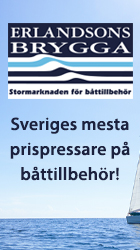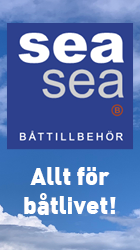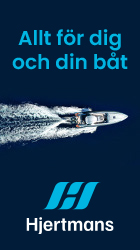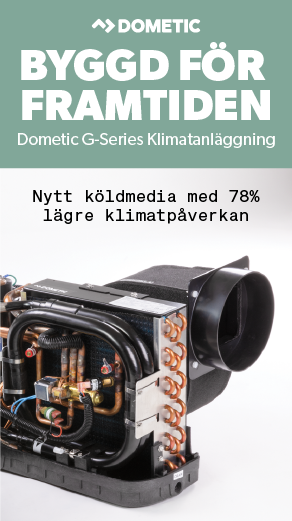Nu får deltagarna i Volvo Ocean Race det betydligt bekvämare. Efter den senaste veckans stentuffa väder kan de nu koncentrera sig på snabb kappsegling men i varmare vatten. Båtarna har cirka 1 000 Nm kvar till Rio de Janeiro och bör nå målet senast efter helgen. Ericsson 3 ligger fortfarande i ledningen. Mange Olsson och hans team leder nu med 87 Nm före Ericsson 4 med Torben Grael.
Fortfarande kan inte Ericsson 3 ta ut segern i förskott, men tendensen de senaste dagarna har varit tydlig: Ericsson håller sin ledning och ökar den så fort tillfälle ges.
Här är den senaste pressreleasen från Race Office:
Friday 20 March 2009 10:00 GMT
THE TEN ZULU REPORT, LEG 5, DAY 33
By Mark Chisnell
The finish line is in sight, everyone is in the Atlantic, and after a short interlude of battling Southern Ocean low pressure systems, high pressure is back on the agenda with a vengeance. If weather systems had personalities this one would be Cher Horowitz – mischievous, mildly manipulative, determined to get people together, but clueless about what it actually wants for itself. And some will be hoping it also has a heart of gold.
At 10:00 ZULU this morning, the leading pack of four was headed north or north-east in a solid south-west or westerly breeze – dodging weed and fog banks. No shortage of wind yet, speeds up into the 20s. Ericsson 3 led the fleet, with Ericsson 4, PUMA and Green Dragon strung out in a line to the south-southwest of her. The gaps between the boats have continued to oscillate – at the moment very much to the advantage of the leader. It all depends on the wiles and will of the high pressure – do we just get more of the same squeeze box action, or is there one more big shake-up on the cards?
The good news for Telefonica fans was that Blue also had almost 20 knots of wind speed, up and moving after a slow rounding (I think the horse-in-front-of-a-landmark image was inspired by the gnome in Amelie…) of Cape Horn yesterday afternoon. But as skipper, Bouwe Bekking told us in this audio interview and this email, it did at least give them the opportunity to do it in some style.
Two main points of action this morning: first up is the issue with the keel hydraulics aboard Ericsson 4 – explained in this .tv clip by Horacio Carabelli. There’s a leaking manifold which is mostly under pressure on starboard tack. At the moment they are on port, but during a period on starboard they saw six litres of oil leak out. It was carefully collected by Carabelli and siphoned back into the system. He reckoned that they can keep going like that, and didn’t want to service it as they might make it worse without all the right tools.
The second thing was Green Dragon’s tour of the Falkland Islands yesterday morning, visible on the Race Viewer. The westerly wind that the fleet carried around Cape Horn was shifting towards the north, as the boats sailed into the influence of a high pressure zone (of which more later). We can see the progressive shift in wind direction (TWD) from the west to the north (during Wednesday night and Thursday morning) in today’s graph. The problem for Green Dragon was that they didn’t quite get far enough north in the westerly breeze, before the wind shift hit them. So that once they were going north-east in the northerly, they found the Falklands in their way.
Skipper, Ian Walker wrote entertainingly (as always) about his opportunity to become the second member of the family to be shipwrecked on the Falklands in this email. But navigator, Wouter Verbraak, got them round after some ducking and weaving with only a ten mile detour. Nevertheless, it was still a loss, and I’m sure that Henrik Heckmann – who voiced the question in yesterday’s Comments – wasn’t the only one wondering why Green Dragon went west of the Falklands, and not east.
The answer is quite technical – Walker talked about their strategy in this audio interview. Essentially, it came down to a wild rounding of Cape Horn, in which they were forced to drop the spinnaker for a while. With the headsail up instead, they had to sail a slightly tighter wind angle (TWA) to remain efficient. And that, in turn, took them towards Tierra del Fuego, and a transit of the Le Maire Strait. And once through the Strait, they were lined up to go west of the Falklands.
Walker wasn’t unhappy about where they ended up – and felt that there were still opportunities for the Dragon if the race slowed up, which it shows every likelihood of doing. Before we go there, as an aside: a couple of days ago in the Comments, henkus was wondering about the lack of StealthPlays so far in this leg. And when we asked the question of Walker, he admitted that he’d forgotten about it – but that it might be useful closer to the finish. Apparently they came close to using a StealthPlay for the same move that Ericsson 3 took at the 36 degree S scoring gate – the New Zealand Move – but Walker reckoned that it would just have signaled their intentions even more.
“The weather is a mess…” Those were the words of Wouter Verbraak, Green Dragon’s navigator. Verbraak saw opportunity, but Aksel Magdahl, navigating aboard the leader, could hardly be blamed for seeing only an uncomfortable future. Looking ahead, the formation or otherwise of the high pressure ridges is likely to be the determining factor in this leg. Race Forecaster, Jennifer Lilly, described an unpredictable situation in yesterday’s weather analysis.
Let’s take a look at this morning’s Predicted Route image, which I’ve set up for the weather and boat positions in 24 hours time. There are two critical features, and they are both areas of high pressure, marked with an ‘H’. The southern one is currently off the coast of Argentina, and will move due east. Green Dragon’s sole focus is on getting north and/or east fast enough not to get caught in the light winds in the centre of this high pressure – the routing thinks her best bet is to go east, where she will be better set up for the next hurdle.
The Argentinean high pressure doesn’t present much of a problem for the top three, as they should comfortably dodge north of it, as it moves towards them. The more technically-minded will note that their wind will shift round from the south-west to the south-east, forcing a gybe to starboard to keep going north-east. The early effect of that wind shift is already visible in the tracks of PUMA and Green Dragon, as they are forced to take a more northerly track. And those who are really paying attention will already have realized that this will put Ericsson 4 on the gybe where her keel hydraulics will be under more pressure.
The biggest problem for the leaders however, is the second area of high pressure, visible to the north of the fleet. This is going to spread across in front of their path, and it’s got the potential for murder on the road to Rio. When Jennifer Lilly wrote her forecast yesterday, it appeared that there was no way through this ridge, compressing the fleet for a restart with about 600 miles (or one Sydney-to-Hobart) to go.
Things look a bit more promising for Team Ericsson this morning, with the Predicted Route seizing on an opportunity to wriggle around the eastern side of this second high. It remains to be seen if the high pressure cooperates with this plan, or if it decides that everyone should get back together after all. Meanwhile, with less than five days left to the finish, preparations are starting for the shore crew race – getting the boats ready for the in-port in Rio. No rest for the wicked – these guys must have done something really bad in a past life.
That’s it for now, the TEN ZULU will be back super-sized on Monday, for the start of what should be the final week…
The TEN ZULU REPORT (so called because it follows the 10:00 GMT fleet position report, and Zulu is the meteorologist’s name for GMT).


.jpg)
.jpg)
.jpg)
.jpg)
.jpg)




